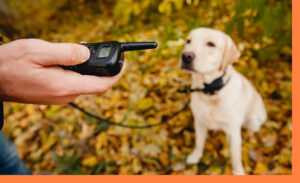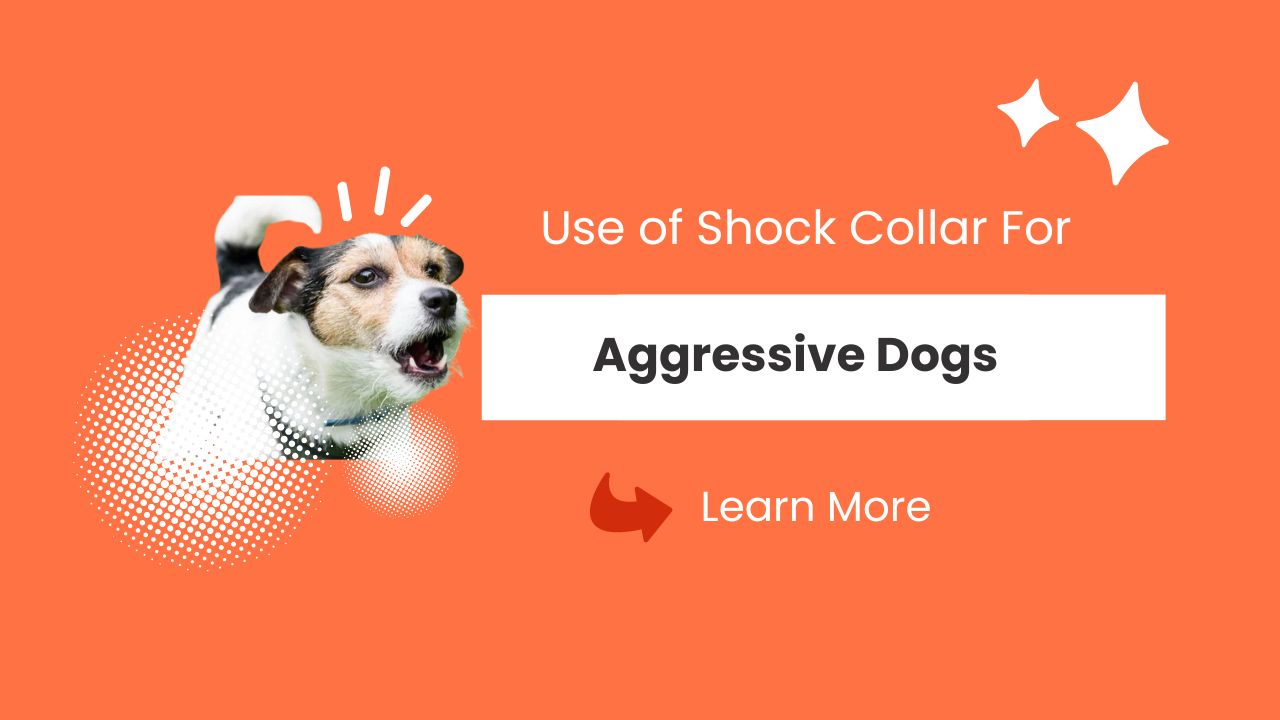Sometimes, our dogs act aggressively, which can be a bit scary. When this situation arises, we aim to seek a method to promote their calmness and safety. One method that some individuals consider is employing a device known as an electronic training collar.
Shock collars are devices that some people use to help dogs behave better when they are aggressive. But, not everyone agrees if they are a good idea or not.
In this article, we’ll talk about the use of Shock Collar For Aggressive Dogs. We’ll focus on keeping your dog safe and happy.
Understanding Shock Collars:
Electric training collars, alternatively referred to as e-collars or remote training collars.
These collars are designed to deliver an electronic stimulus, typically a static shock, vibration, or spray, to the dog when they exhibit undesirable behavior.
When to Use Shock Collar For Aggressive Dogs
Deciding whether to use a shock collar should not be taken lightly. It’s advisable to consult with a professional dog trainer or behaviorist who can assess the situation and recommend the most appropriate approach.
Shock collars should generally be considered as a last resort, especially for aggressive behavior.
Before resorting to a shock collar, explore alternative training methods that prioritize positive reinforcement and behavioral modification.
Aggression In Dog:
Aggression in dogs refers to various behaviors or actions where a dog displays hostility, threat, or harm towards people, other animals, or objects.
It’s important to note that aggression can manifest in different forms and may have various underlying causes. Here are some common types and causes of aggression in dogs:
Fear Aggression:
Dogs may become aggressive when they feel scared or threatened. This can happen when a dog is put in a situation where it feels unsafe, and it may react aggressively to protect itself.
Territorial Aggression:
Dogs are known for their territorial instincts. They might become aggressive when they feel that their territory, such as their home or yard, is being invaded by people or other animals.
Dominance Aggression:
Some dogs may display aggression as a way of asserting dominance or control over other dogs or people. This can occur in multi-dog households or when a dog feels it needs to establish itself as the “alpha.”
Possessive Aggression:
Dogs can become aggressive when they are guarding something they consider valuable, such as food, toys, or even their owner’s attention.
Redirected Aggression:
This occurs when a dog is unable to direct its aggression towards the source of its frustration. For example, if a dog is barking at a person or animal on the other side of a fence and cannot reach them, it might turn and redirect its aggression toward a nearby dog or person.

Use of Shock Collar For Aggressive Dogs
When it comes to using shock collars for aggressive dogs, responsible training techniques are crucial. Let’s delve into these techniques:
A. Positive Reinforcement:
Positive reinforcement means rewarding your dog when they behave well. Instead of using the shock collar to punish, use it to reward your dog when they do something good.
In this manner, your canine companion grasps the concept that exhibiting positive behavior results in favorable outcomes, thus enhancing the overall positivity of the training experience.
B. Setting the Correct Stimulation Level:
Choosing the right intensity level on the shock collar is vital. Start at the lowest setting and increase it gradually if needed. Pay close attention to your dog’s reactions, ensuring they are not in pain but are aware of the training cues.
C. Consistency in Training:
Consistency is key to any successful training. Use the shock collar commands consistently, and ensure everyone involved in the dog’s care follows the same rules. This helps avoid confusion and reinforces the desired behavior.
D. Using Shock Collars as a Last Resort:
Only use shock collars if other methods haven’t worked. Try positive reinforcement and behavior training first. Before using a shock collar, get advice from a professional to make sure it’s the right choice for your dog’s happiness and safety. Remember, using shock collars responsibly always puts your dog’s comfort and safety first.
Do Shock Collars Calm Dogs?
Shock collars aren’t meant to calm dogs. They’re for correcting behavior. These collars give a little electric zap or a vibration to stop certain actions.
But they don’t make a dog less anxious or hyper. To truly calm a dog, you need to figure out what’s making them anxious or excited and then use positive training, exercise, and a comfy place to help them relax.
Shock collars should be used carefully and are not a guaranteed solution for calming dogs.

Do Shock Collars Hurt Dogs Necks?
Yes, shock collars can hurt a dog’s neck. These collars work by delivering an electric shock when a dog behaves undesirably, and this shock can cause pain, stress, and physical harm. The metal prongs on the collar can dig into a dog’s skin, leading to injuries like burns and sores.
Moreover, the fear and anxiety associated with shock collars can affect a dog’s mental well-being.
To solve this issue, it’s better to use humane and positive training methods. Replace shock collars with techniques that reward good behavior with treats, toys, or praise.
Consistency, patience, and clear communication are key. Seek professional dog trainers or behaviorists for guidance if needed. Ensure your dog has proper exercise, mental stimulation, and a loving environment to prevent behavioral problems.


